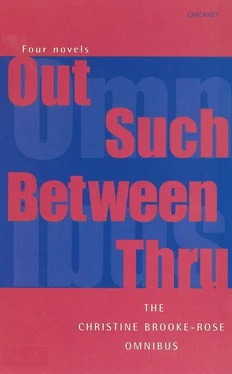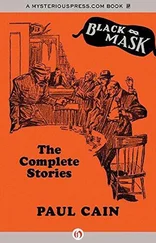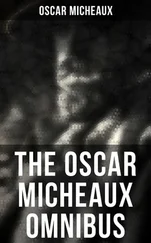Christine Brooke-Rose - The Brooke-Rose Omnibus
Здесь есть возможность читать онлайн «Christine Brooke-Rose - The Brooke-Rose Omnibus» весь текст электронной книги совершенно бесплатно (целиком полную версию без сокращений). В некоторых случаях можно слушать аудио, скачать через торрент в формате fb2 и присутствует краткое содержание. Год выпуска: 2012, ISBN: 2012, Издательство: Carcanet Press Ltd., Жанр: Современная проза, на английском языке. Описание произведения, (предисловие) а так же отзывы посетителей доступны на портале библиотеки ЛибКат.
- Название:The Brooke-Rose Omnibus
- Автор:
- Издательство:Carcanet Press Ltd.
- Жанр:
- Год:2012
- ISBN:9781847775757
- Рейтинг книги:5 / 5. Голосов: 1
-
Избранное:Добавить в избранное
- Отзывы:
-
Ваша оценка:
- 100
- 1
- 2
- 3
- 4
- 5
The Brooke-Rose Omnibus: краткое содержание, описание и аннотация
Предлагаем к чтению аннотацию, описание, краткое содержание или предисловие (зависит от того, что написал сам автор книги «The Brooke-Rose Omnibus»). Если вы не нашли необходимую информацию о книге — напишите в комментариях, мы постараемся отыскать её.
The Brooke-Rose Omnibus — читать онлайн бесплатно полную книгу (весь текст) целиком
Ниже представлен текст книги, разбитый по страницам. Система сохранения места последней прочитанной страницы, позволяет с удобством читать онлайн бесплатно книгу «The Brooke-Rose Omnibus», без необходимости каждый раз заново искать на чём Вы остановились. Поставьте закладку, и сможете в любой момент перейти на страницу, на которой закончили чтение.
Интервал:
Закладка:
To the right of the coast of foliage around the house, the gazebo is just visible on the lawn. The new pavilion is hidden in the trees.
Beyond the pale yellow fringe of the mimosas bordering the property the olive groves tumble away in a silvery green sea. Taking one step to the left of the window, it is possible to see the Settlement of dark brown shacks, each sloping corrugated roof straddling its minute verandah like a fornicating fly, its wings shining patchily in the sun. The flies are regimented on a flat ground just outside the town. The individual couples are not distinguishable. The fig-tree cannot be seen at this distance. Perhaps it has been blasted. The town sprawls in a haze, tall where it is not squat, grey where it is not golden. The sunlight must be directly on it because the haze makes it indistinct. Taking one step to the right of the window, it is possible to see, far out to the left beyond the maize fields but clearly delineated in the more indirect light, the Colourless Hospital and, next to it, the Colourless Cemetery, a miniature town of miniature sky-scrapers. The gesture is one of careful investigation. The black fingers move swiftly over the white abdomen, palpating the left side or knocking gently through black fingers. The dark nurses move stealthily along the beds in pink stiff calico and silent knowledge. The Colourless are dying of the malady.
Out of the trees immediately below, the garden-party spills its molecules over the lawn.
Daily at five a.m. is the moment of truth. The body lies under the army blanket, as close to its objective self as it is possible to be, listening to the lack of dialectic that strengthens it from within. The body lies under the army blanket, comfortably enclosed in the absolute knowledge that it lies under the army blanket in the dark on a large square mattress on the floor of a small rectangular room through the rectangular window of which a dim daybreak slowly unrounds the murkiness back to angles. Sooner or later some interruption will be inevitable, a movement upwards of the knees and sideways of the feet, a lifting of the torso, a leaning on the elbows perhaps, a crouching of the legs, a pushing-up of the body with the arms, a stepping to the window that gives out on to Mrs. Ned’s shack and, from a certain position, on to the fig-tree that looks blasted. Everything that moves increases risk. But now there is only immobility and in the dark a state of comatose suspension. The body lies under the army blanket, a long way from the small high window, comfortably enclosed in the absolute knowledge that Mr. Swaminathan has not nodded and will not nod ever at any time, and that it doesn’t matter in the least. The absolute knowledge wraps the body from outside, leaving no trace of error in it.
Sooner or later the observation of phenomena will be inevitable. But now there is only the listening to the shadow which, however, rapidly curls up its film-reel and goes to sleep. The fig-tree’s grey framework of trunk and branch, that leans along the edge of the bank at an angle of forty degrees, is further framed by a mass of deep green foliage. Inside the angle, the road may be seen. From ground level, near the fig-tree, the arch formed by the leaning trunk and the downward sweeping branch frames a whole landscape of descending olive-groves beyond the road, which itself disappears behind the bank. The U-shape of the thick and long grey twigs on the downward sweeping branch, which grow first downwards and then curve up, is partly camouflaged in the deep green foliage.
If the grey trunk is further framed by deep green foliage the fig-tree cannot look blasted.
If the clumps of laurel are in full pink and crimson flower the mimosas cannot still be in bloom.
The dim daybreak slowly unrounds the murkiness back to angles. Sooner or later the immature cells will begin to circulate, the myeloblasts and myelocytes, the promyelocytes and metamyelocytes.
Daily at eight a.m. the hope has grown that Mr. Swaminathan will perhaps nod today after all. The hope has grown with the indwelling of Mr. Swaminathan as he cohabits the body, sharing the observation of phenomena, along the passage that is angular when curving is desired, into the kitchen with the red and still stone floor, you see how still it is, Mr. Swaminathan, because the sun cannot as yet stream through the bead curtain, between Mrs. Ned’s verandah, it is dilapidated isn’t it, and the large-leafed fig-tree on the right, I told you it couldn’t look blasted now, on to the road, past the Settlement, along the road with the town behind, through the olive groves and the carefully terraced, carefully irrigated vegetable gardens, but as you know they’re always dry, dry, the vegetable gardens, there’s never enough to go round, along the road, through the village of smart concrete huts, past the concrete post office and past the grocer, through the averted looks and eyeless smiles, along the road, past the big white houses, along the white wall that is gently rounded, so you see it’s impossible at any one moment to know whether things are any different round the corner, into the tradesmen’s gate that leads up to the back of the big house, the hope has grown that Mr. Swaminathan will perhaps nod today after all. The servants’ stairs are steep and stony. Up the five flights the body suffers from dypsnoea. The pink marble bathroom is short of air. There are seven steps to the step-ladder, then five more up the ladder and the body leans against the top of it, heavy with the absolute knowledge that Mr. Swaminathan has not nodded and will not nod ever at any time, and that it hurts. The absolute knowledge has entered the body at the back of the neck somehow, in the medullary centres, down the glosso-pharyngeal nerve no doubt, or the pneumogastric, at any rate forward and down into the throat, which tightens as enlargement of the lymphatic glands occurs and the knowledge spreads into the chest and down into the stomach, nauseous. Sooner or later it will reach the spleen, which will increase in size until it fills most of the abdomen, though remaining firm and smooth on palpation. Anaemia, fatigue, pyrexia, tachycardia, dypsnoea, cachexy, the onset is insidious and well advanced before diagnosis. The prognosis is poor, continuing to a fatal termination. Splenectomy contra-indicated, treatment unsatisfactory, no therapy, but the blood-count, marrow biopsy and glandular biopsy will furnish a firm diagnosis. These organs on section appear grey or reddish grey, packed with myeloid cells, mainly polymorphonuclears and immature cells such as myeloblasts, promyelocytes, myelocytes and metamyelocites. The marble chips fall chirpily to the floor. It is possible to detach the larger pieces of vertical slab by holding the left forearm against them while hammering on the chisel, but more often than not they crash to the floor, breaking into much smaller and unusable pieces.
— Mr. Swaminathan, you said in the street that memory is a primitive weapon.
— My dear chap, memory is not a place but a racing function of neural cells giving off dismal rhythms at less than ten microvolts, which are driven into by the high-pitched ring of hammer on chisel into marble. What did you say your occupation was before the er —?
— I was a humanist.
— I didn’t mean your politics. And in any case, which humans? Which section of humanity were you for? The weak or the strong? Quick, two seconds to answer. One, two. You’re a square peg in a round hole aren’t you?
The conversation cannot take the form of the hammering because during the hammering there is no conversation, and during the conversation, if it occurred, there was no hammering. Without a recording engineer no chemistry of identity can put those two elements together in time. The pressure of the forearm on the vertical marble slab is difficult to estimate accurately. Either it prevents the chisel from penetrating beneath the slab, or it is too loose to hold the slab to the wall. Either the conversation has partially occurred, the beginning for instance, the remainder being suppressed, selected, manipulated, transformed, schematised, because inunderstood. Or the conversation has wholly occurred, and been wholly manipulated, transformed, schematised, because inunderstood. The marble slab breaks into three large pieces, two of which fall crashing to the floor. A corollary to that is that the conversation has wholly occurred and that Mr. Swaminathan is mad. The gazebo is fully visible on the lawn, to the right of the coast of foliage around the house. The new pavilion is hidden in the trees. A second corollary is that the conversation has wholly occurred and is wholly sane but beyond the grasp of sick white reasoning. A pigeon lands on the parapet of the lower terrace roof above the entrance colonnade and shifts from one leg to another. A second pigeon lands a half metre or so away on the same parapet and waddles cautiously with an occasional bold side-hop, up to the first pigeon, who flies to the curlicew top of a jar on the parapet, followed after a pause by the second pigeon in a flutter. There is not enough room for two on the curlicew top of the concrete jar and the first pigeon takes off, swoops down towards the green crocodile and then veers upwards suddenly and close past the window, to land presumably on the roof immediately above. The second pigeon flies across the crocodile below and into a tall pine-tree.
Читать дальшеИнтервал:
Закладка:
Похожие книги на «The Brooke-Rose Omnibus»
Представляем Вашему вниманию похожие книги на «The Brooke-Rose Omnibus» списком для выбора. Мы отобрали схожую по названию и смыслу литературу в надежде предоставить читателям больше вариантов отыскать новые, интересные, ещё непрочитанные произведения.
Обсуждение, отзывы о книге «The Brooke-Rose Omnibus» и просто собственные мнения читателей. Оставьте ваши комментарии, напишите, что Вы думаете о произведении, его смысле или главных героях. Укажите что конкретно понравилось, а что нет, и почему Вы так считаете.












